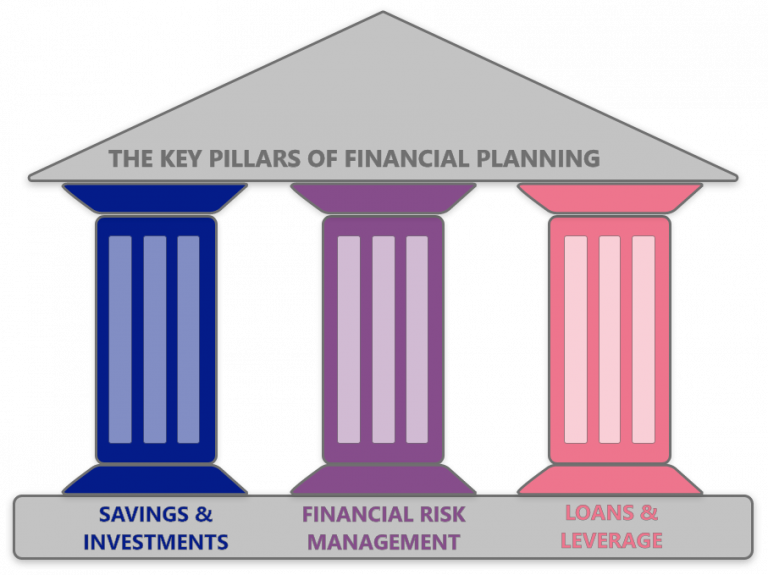Key Takeaways
- Investment planning is a small subset of comprehensive financial planning.
- The components of financial planning can be divided into three key pillars: savings & investments, financial risk management and managing loans & leverage.
People often confuse financial planning with investment planning. In fact, they assume that saving and investing is all you need to worry about to take care of your financial planning. While important , this is but a single component of a financial plan and taking such a limited view of financial planning can be detrimental to us.
A financial plan is defined by Wikipedia as “a comprehensive evaluation of an individual’s current pay and future financial state by using current known variables to predict future income, asset values and withdrawal plans.” There are multiple components that you need to take care of in order to create a comprehensive financial plan and achieve financial freedom. For the sake of simplicity, we have divided these components into three key buckets, which form the pillars of financial planning.

The three key pillars of financial planning
1) Savings and investments
Savings produce the initial capital to build our financial empire. Managing these funds well and growing them effectively is a critical component of the financial planning process. There are a few key elements that fall within the purview of this pillar and must feature in all financial plans. These include:
- Cash flow and budgeting: Making sure you’re not spending beyond your means and that you save enough through good budgeting.
- Goal based planning: Setting funds aside for long-term goals by saving and investing in a targeted manner.
- Investment portfolio planning: Creation and management of investment portfolios with effective asset allocation that is well-diversified and has a good risk return profile.
- Tax management: Planning your taxes strategically to ensure that you maximise your savings and keep as much of your income as possible.

2) Financial risk management

This pillar comprises all of those financial tools and strategies that help you prepare for unforeseen situations and ensure that you can stay on top of your goals irrespective of what life throws at you. A strong financial plan must encompass some key risk management tools such as:
- Insurance: Term life insurance, critical illness and hospitalisation coverage are indispensable tools that help us manage risks with our most important asset – ourselves! You should also ensure that you cover your material assets with general insurance, such as car and home insurance, to safeguard them against any unfortunate events.
- Emergency funds: Having sufficient liquidity in times of need can make a huge difference in difficult moments. A good financial plan will allocate sufficient emergency funds that are readily available and risk free.
- Estate planning: Making sure things are taken care of when we are not around with proper estate planning or simply having a will can make a big difference to our loved ones.
3) Loans and leverage
Loans often account for a considerable and often inevitable component of our liabilities, be it housing or education loan, or personal loans needed during emergencies, or loans that are inherited. They can be a saviour in times of extreme need when all else fails and can even serve as a powerful tool to grow our wealth when used wisely as leverage. On the flipside, they can be extremely detrimental when managed poorly. Therefore, a good financial plan must enable effective management of loans and leverage.
- Managing loans: This encompasses various strategies such as diligent repayment, refinancing to reduce interest rates or consolidating loans for easier management.
- Using leverage: Good loans such as home loans or business loans can leave us financially better off than we were before and effectively utilising the power of leverage in these instances can help us achieve our goals faster.
- Maintaining credit score: Proper management of our financial obligations through paying bills (especially credit card) and EMIs timely can massively impact the health of our credit score, and be the difference between being able to borrow or not.

Bottom Line
Comprehensive financial planning goes beyond savings and investments to account for risk management as well as your liabilities such as loans and investments. Work with a financial advisor (human or robo) that can help you manage all these pillars effectively. We at Cashvisory are building smart solutions to help make the process hassle-free for you and help you take steps in the right direction. Stay tuned!